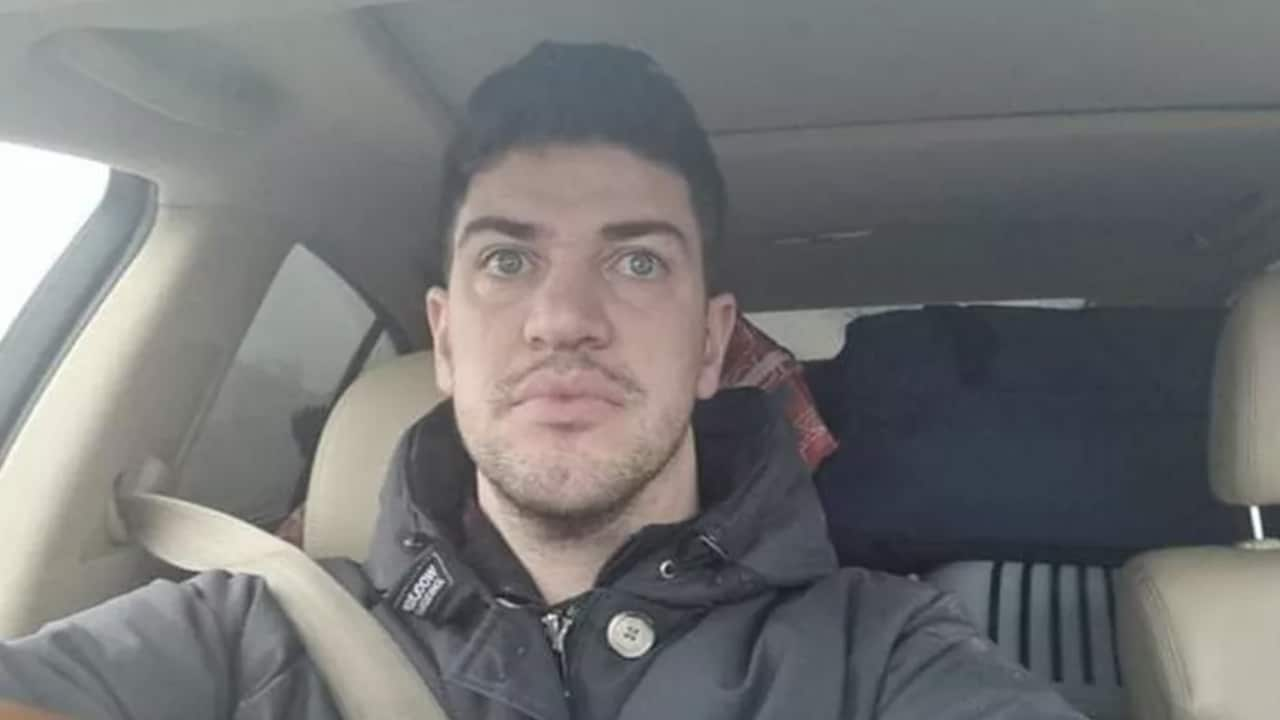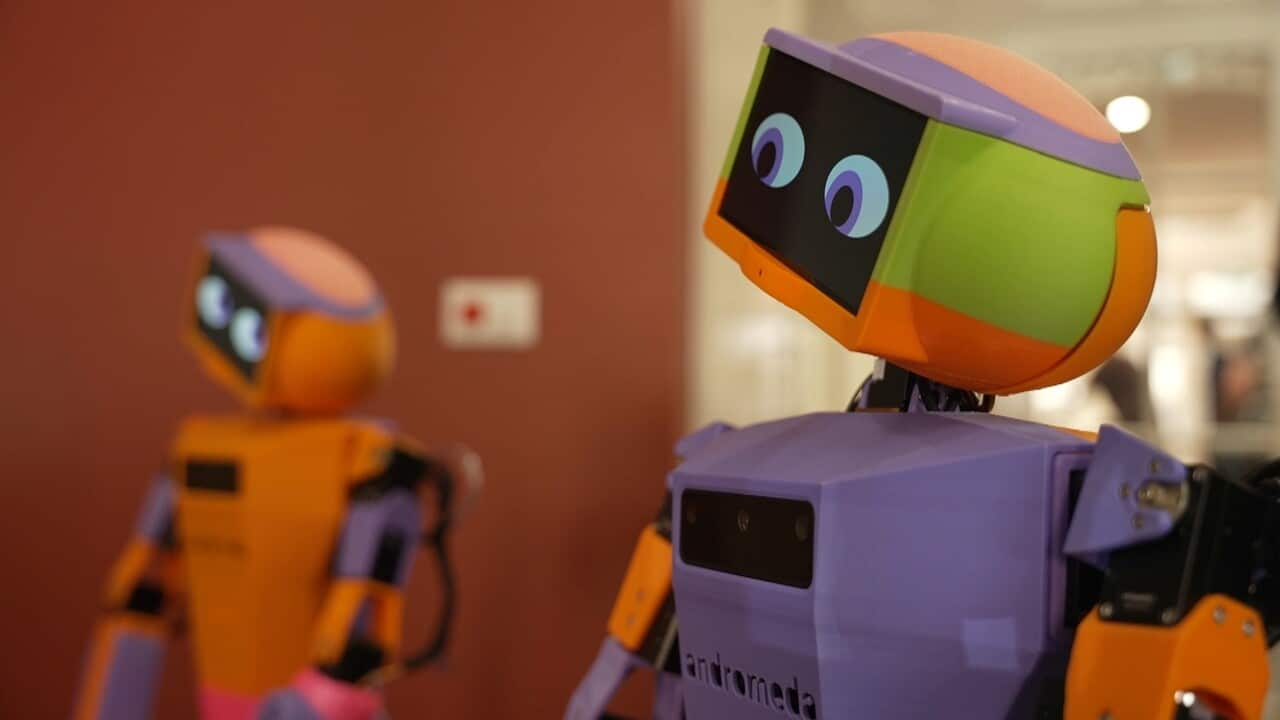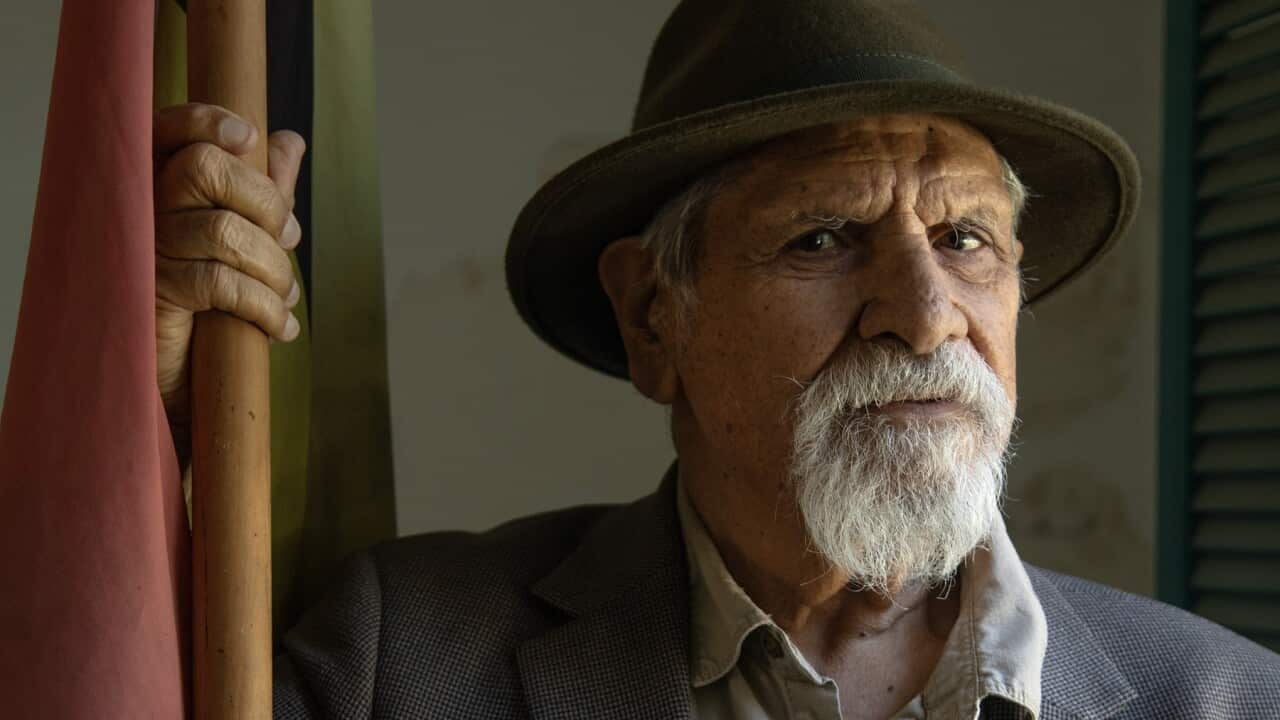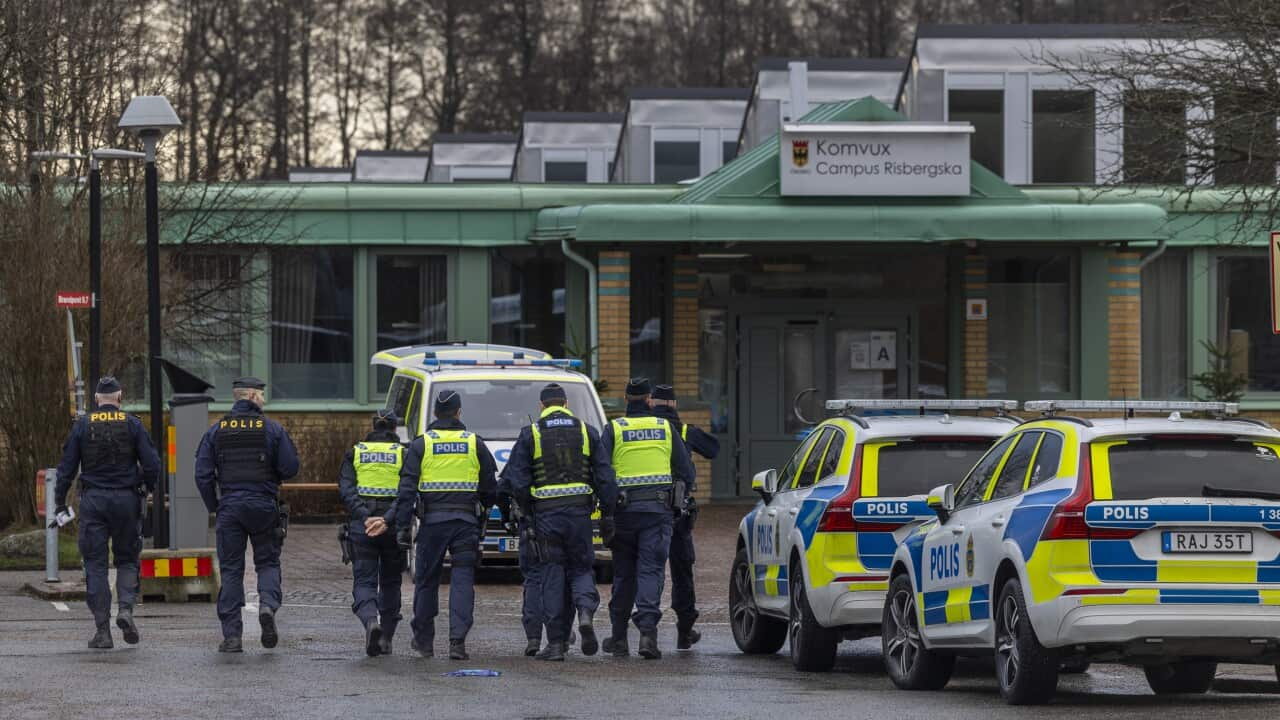Highlights
- On 24 February, as the Russian army invaded Ukraine, Domenico Raguseo was just a few hours' drive from Kyiv
- While his Italian passport had many Russian stamps in it that could potentially raise border force suspicions, Mr Raguseo's Australian passport did not have traces of his extended stays in Russia
- After arriving safely back in Moscow to his wife and child, he raced to the bank to take out all of his savings
Mr Raguseo, who has lived in Russia since 2018, currently resides in the capital Moscow with his Russian wife Olga and their five-month-old daughter.
Born in Italy, he made his way to Australia as a working holidaymaker in his early 20s.
"I arrived in Sydney and after three months I moved to Perth, where I spent the next 10 years of my life and had the privilege of acquiring Australian citizenship," he tells SBS Italian.
Carrying two passports, he explains, can have its advantages.
Around two months ago, Mr Raguseo agreed to head to the Ukrainian city of Vinnytsja, about two and a half hours south-west of Kyiv, in order to drive a friend's car back to Italy.
I could have never imagined that a simple favour for a friend could have turned into one of the scariest experiences of my life.
"When I arrived at the airport in Moscow, I started to feel that something was wrong. The policemen asked me repeatedly why I was going to Kyiv."
Despite both the Italian and Australian governments having warned their citizens to avoid non-essential travel to Ukraine since mid-February, he wanted to keep his promise, so he flew to Kyiv via Istanbul.
"I have had this plane ticket for two months, and I honestly did not think anything bad could happen."
This sensation of normality was confirmed as soon as he stepped off the plane.
"When I arrived in Kyiv on the Wednesday afternoon, everything was normal. I was drinking cola and eating local food right in the main square, and lots of other people were doing exactly the same," he says.
"Once I received all the documents I needed to take the car over the border, I took the train to Vinnytsja where I met my friend's parent in law, who handed over the car."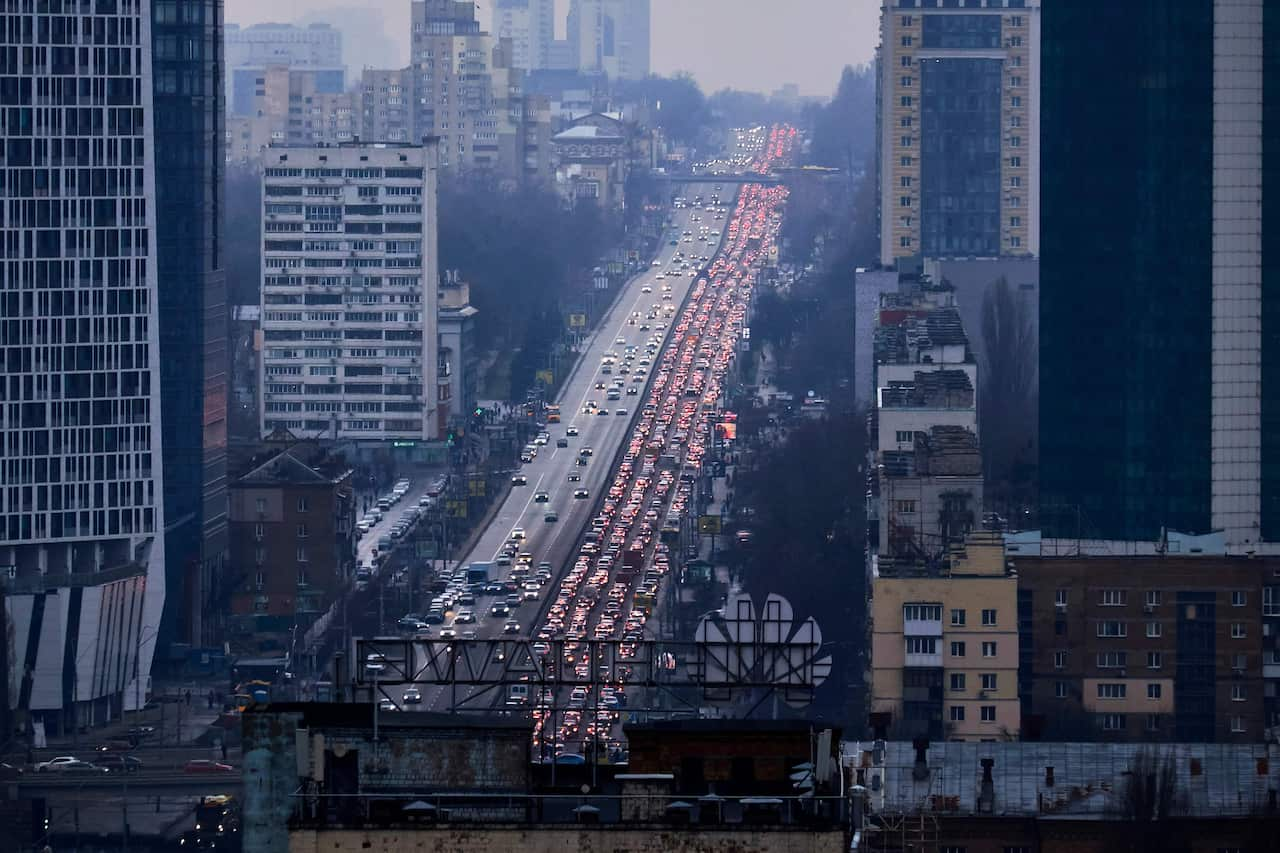 However, by the early hours of Thursday, 24 August, Russian military forces made their way into Ukraine, after President Vladimir Putin approved a special military operation.
However, by the early hours of Thursday, 24 August, Russian military forces made their way into Ukraine, after President Vladimir Putin approved a special military operation.

Residents of Kyiv leave the city following pre-offensive missile strikes of the Russian armed forces on 24 February, 2022. Source: Getty / Pierre Crom/Getty Images
The international community was quick to condemn the move by the Russian government, with Australian Prime Minister Scott Morrison describing it as "the brutal and unprovoked invasion of Ukraine".
The Department of Foreign Affairs and Trade also updated its advice for Australian citizens in Ukraine, recommending them to immediately leave the country.
'Driving like a maniac'
Mr Raguseo says he was driving towards the Hungarian border when, at around 5am, his phone "started going crazy".
"I never look at my phone when I drive, but it was so insistent, that I had to stop and have a look."
That was the moment he realised that Russian troops had started making their way into Ukraine.
"I was very scared and I made a very stupid decision. I started driving like a maniac at 150 km/h down this road, but that lasted for about two minutes, when, after hitting a pothole, one of the tyres blew."
It was raining, it was cold and Mr Raguseo had never changed a tyre before.
The only thing that kept me sane was looking at the beautiful, calm and snowy mountains around me and thinking that in all probability Russian troops would hopefully not make their way there anytime soon.
"It took me around an hour to change the tyre and I only had a quarter of a tank of petrol left in the car so I tried to stop to fill up."
He quickly discovered that filling up his car would be a much harder challenge than he originally thought.
"There were very long lines at all the petrol stations and I decided to stop at one. I tried to pay for petrol with my credit card, but they would not accept it."
He remembered he had some foreign cash in his wallet and tried to barter it for a full tank of petrol, but that did not work either.
"I first gave the man US$50 and he simply refused. I offered him US$1,000 and he still refused."
Mr Raguseo figured he was only a couple of hours away from the Hungarian border and that he could make it there with the petrol he had.
Border panic
Once he arrived at the border, he began panicking over whether the Ukrainian border officers would let him pass through.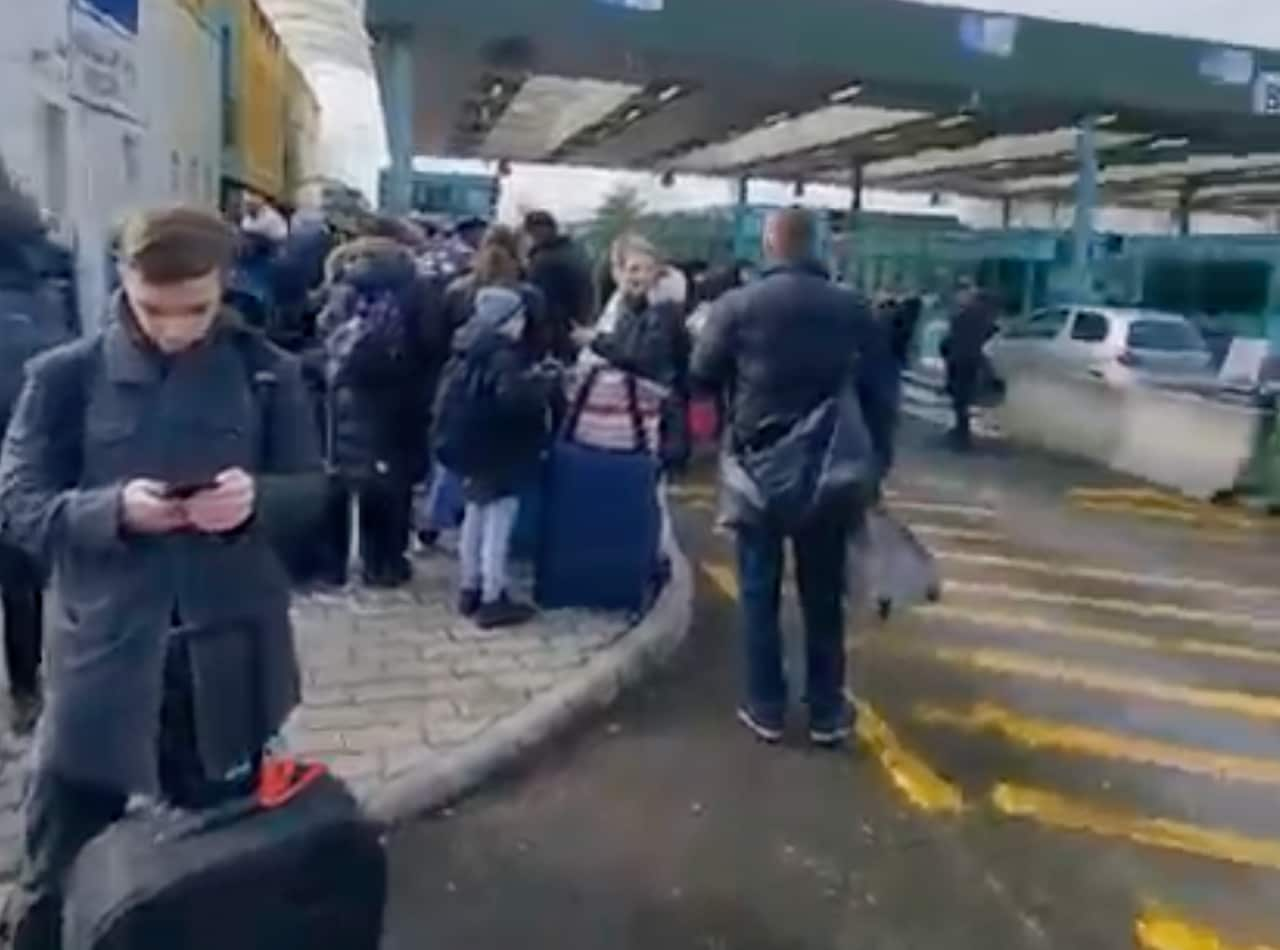 "My Italian passport had my Russian business visa and approximately 50 Russian entry stamps. Could they think I was a spy? What could they do to me? So many questions started going through my mind and I really started to panic."
"My Italian passport had my Russian business visa and approximately 50 Russian entry stamps. Could they think I was a spy? What could they do to me? So many questions started going through my mind and I really started to panic."

People lining up at the Ukrainian-Hungarian border on 25 February 2022 Source: A scene at the Ukrainian-Hungarian border on February 25th 2022
But then Mr Raguseo remembered the other passport he always carries, but uses less frequently when travelling through Europe.
I pulled out my Australian passport as I thought it would be a much safer option.
Once he reached the border, he says he had to hide how nervous he was.
"I tried to be the funny guy, the guard made a joke about the kangaroo on the passport and I made another one about how venomous Australian snakes are."
In just a few minutes, he was over the border and could breathe a sigh of relief.
'Coming home'
Mr Raguseo arrived in Italy the following day, but by now his thoughts had turned to his wife and child left behind in Russia.
"I jumped on the last flight to Moscow before the European Union announced the closure of its airspace to Russian planes," he says.
"As soon as I arrived back in Russia, I went first to the ATM and then to the bank to pull out as much money as I possibly could.
"The wait at the ATM was approximately 40 minutes, while at the bank I had to wait several hours."
Despite the mad rush to get cash out, Mr Raguseo says the situation in Moscow felt quite normal.
"I did not feel like there was any difference in the streets of Moscow, but yet again I felt exactly the same way in the streets of Kyiv just 10 hours before the Russian invasion."
As for his future, he is looking forward to making his way back to Australia.
"My wife received her partner visa a couple of months ago, and we are just waiting for our child's paperwork to be finalised.
"I can't wait to come back home to Australia."
